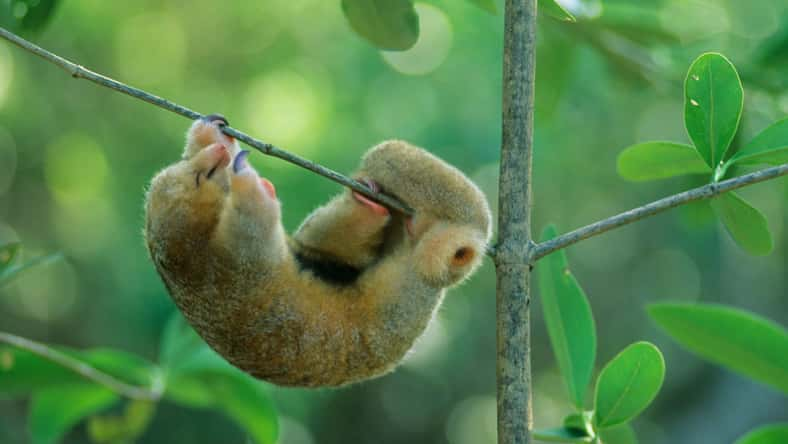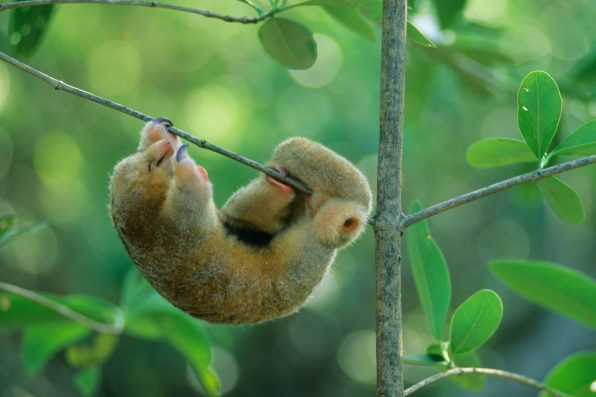The Silky Anteater May Be The Smallest In The World, But This Cute Creature Still Packs A Punch When Faced With Threats

The smallest anteater in the world grows up to just 14 inches. Though it may be tiny, it is mighty, throwing a mean punch when faced with a threat. The cute little creature is known as the silky anteater (Cyclopes didactylus).
The silky anteater weighs 14 ounces and reaches 14 inches in length, or 18 if you include its tail. It lives in a region spanning from southern Mexico to South America.
Its diet consists of ants, wasps, termites, and small beetles. It uses its long, sticky, noodle-like tongue to slurp up food.
It has soft, dense fur that provides camouflage in silk-cotton trees. When a silky anteater curls up into a ball, it resembles the seed pods in the trees. This way, they can avoid detection by predators like the harpy eagle or a spectacled owl.
The fur also gives it a fluffy, cuddly appearance, but make no mistake—this creature can hold its own in a fight.
When a silky anteater comes across a threat, it stands on its hind legs, using its tail as an anchor. Then, it will raise its large, curved claws up to its face and strike. Its tail is long and prehensile, which means it can hold onto branches.
Although the silky anteater can fight, its best defense mechanism is to stay hidden among the treetops of lowland rainforests.
They hardly ever touch the ground, as that would make them highly vulnerable. Since the animal is both solitary and nocturnal, it is rarely ever seen. As a result, little is known about the species.
Scientists once thought all silky anteaters were a single species. But, in 2018, researchers studied DNA samples, bone structures, and color patterns of 287 museum specimens. Now, they believe there are more than seven species of silky anteater.

Kevin Schafer/Danita Delimont – stock.adobe.com – illustrative purposes only, not the actual anteater
Silky anteaters consume up to 5,000 ants per day with the help of their claws and sticky tongues. Like all anteaters, they do not have any teeth.
Scientists think anteaters lost their teeth over millions of years because they ate soft insects that didn’t require strong teeth to chew.
Currently, the silky anteater is classified as “Least Concern” on the IUCN Red List of Threatened Species. Threats to the animal include habitat loss and naturally low reproductive rates.
Silky anteaters breed twice a year and only give birth to one offspring at a time, limiting how quickly their numbers can bounce back. In some areas, they are even captured as pets. The anteater does not usually survive long in captivity.
All anteater species are important in maintaining the balance of their ecosystems by controlling ant and termite populations.
They prevent potential damage to vegetation and crops, and their unique digging behavior helps aerate the soil, enhancing soil health.
Sign up for Chip Chick’s newsletter and get stories like this delivered to your inbox.
More About:Animals





